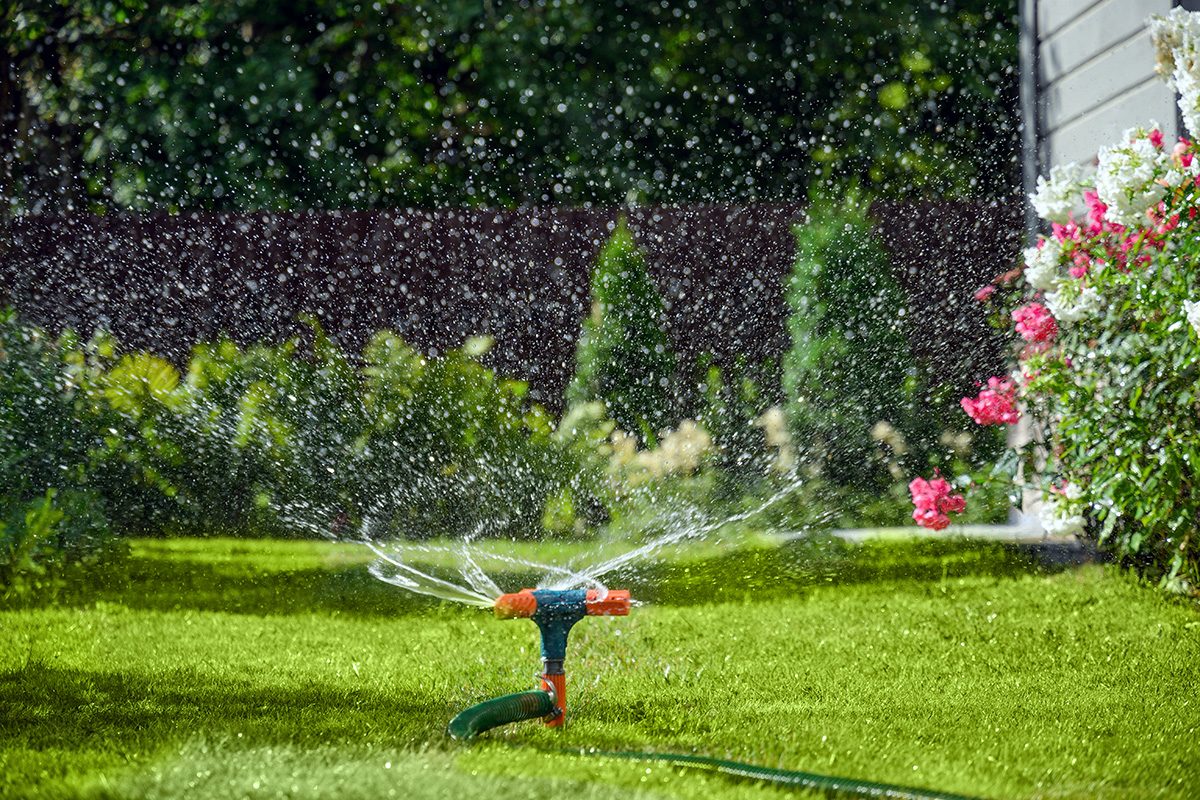Implement these water-saving tips to cut down on your utility bill, reduce waste and keep your lawn and garden healthy year-round.

10 Water-Saving Tips for Your Garden and Yard

Water, like everything else these days, is getting more expensive. In my town, the rate per gallon has more than doubled over the past two years, with another increase expected next year. Beyond the rising cost, water is a limited resource that deserves thoughtful use by both homeowners and municipalities.
To do your part and save some money in the process, opt for water-saving strategies and practices when planning and cultivating lawns and gardens. Ahead, we share ten practical water-saving tips, with input from two lawn and garden experts: Ryan Mange from CMS Landscaping and Joe Churchill from Reinders.
On This Page
Choose drought-tolerant plants

This tip applies to lawns and gardens. When planting lawns, choose drought-tolerant grass seed types like buffalo grass, tall fescue or fine fescue, which require less watering once established. In garden beds, opt for drought-tolerant plants such as lavender, yarrow, salvia and black-eyed Susan to reduce the need for watering.
Add a rain barrel (or two)
Attached to your home’s gutter system, rain barrels make it easy to divert rainwater to your garden or lawn. I always have at least one rain barrel on my property and use it to water my flower containers. It’s a simple way to cut down on municipal water use, especially during dry spells. Even a single storm can fill a barrel, providing a free and sustainable water source for days.
Mulch well
“Proper mulching of plants and garden beds helps reduce water loss due to evaporation and retain water in root zones of trees, shrubs and other garden plants,” Mange says. “Three to four inches of mulch is plenty, and be sure not to pile it up around the trunks of trees and shrubs.” Organic mulches like wood chips, straw or shredded leaves can also improve soil quality over time as they break down.
Plant native shrubs
In the garden, choose native plants shrubs and perennial flowers. These set deep root systems and are more likely to ride out a dry spell. Native plants are also better adapted to local soil and climate conditions, which means they typically need less water, fertilizer and maintenance overall. Choosing the right plants can make a big difference in water usage.
Add organic matter to soil
“Organic material in the soil provides sites for both water and nutrients to adhere and be available for roots or plants,” Mange says. If your soil is hard and dry, consider amending it with compost or aged manure. This not only improves water retention but also enhances soil structure and supports healthier root growth.
Replace grass with ground cover

Ground covers like pachysandra, vinka vine and ivy require little maintenance once established, and need little to no water. The areas of pachysandra in my yard have never been watered and look great year after year.
Install a smart irrigation system
A smart irrigation system includes ground sensors placed strategically throughout your lawn. “These sensors will sense when the soil under your lawn is dry and will engage the system only when water is needed. And, just as importantly, tell your irrigation system when it’s not needed and can take the day (or two or three) off,” Churchill says. These systems “lead to precise usage and way less waste and runoff than older irrigation systems or watering with a garden hose,” Mange says.
Raise the mower height
Longer grass blades shade the soil and reduce evaporation caused by direct sun exposure by keep the ground cooler during hot weather. In addition, maintaining a taller grass height encourages deeper root growth, which improves the lawn’s drought resistance over time. Raise your mower deck to 4-in. for cooler-weather grass and to 3-in. for warm weather grass.
Only water during ideal conditions
Early morning is generally considered the best time to water, as temperatures are cool and the grass has time to absorb the water through the day. “Try to stay away from watering during the midday when ambient temps are hot, and it may be windy,” Churchill says. If temperatures are 85 degrees or higher, most of the water evaporates before hitting the ground. This is Watering on windy days prevents water from reaching its intended target.
Plant a low-water lawn alternative
Low-water lawn alternatives are becoming increasingly popular in water-scarce climates like California and Arizona. While initial installation costs can be expensive, artificial lawns offer the benefits of real grass without any need to water. Another option is to plant grass-like ground covers like clover, creeping thyme and buffalo grass that stay green, can handle minor foot traffic and require little to no water.
About the Experts
- Joe Churchill is a Senior Turf Specialist with Wisconsin-based Reinders, a major distributor of lawn care products in the Midwest. He has over 25 years of experience in the turfgrass industry, is certified in Turfgrass Management with a B.A. in Geography and Horticulture from the University of Minnesota.
- Ryan Mange is a Lawn/Plant Health Manager at CMS Landscaping, a full-service lawn care and irrigation company in Holyoke, Massachusetts. He is also an International Society of Arboriculture (ISA) Certified Arborist.



















